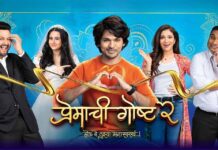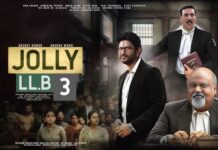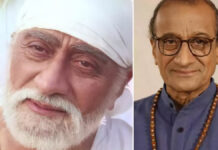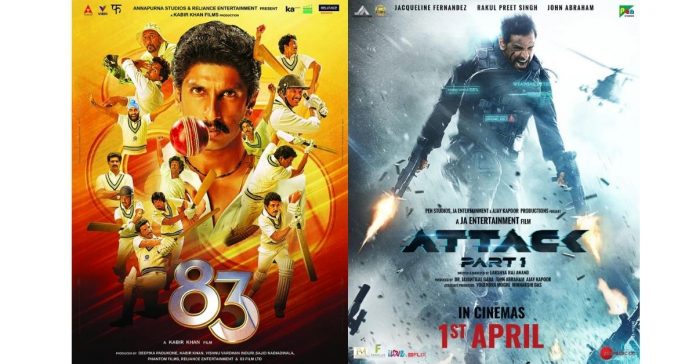Film audience is an emotional audience. Indian film audience is more emotional than, say, the American or European audience. In India, they fall in love with their screen heroes and characters. They cry with him, laugh with him, feel his pain and anguish. They applaud him for his victories, they clap for him and shed tears of joy for him.
If that be so, why did Ranveer Singh’s 83 and John Abraham’s Attack not get the plaudits from the paying public? Although the reasons for the failures of the two films are different because their plots are different, their budgets are not the same, their star casts are different, their making is different from each other, there is one underlying similarity about the two non-successes. No doubt, the failure of 83 cannot be compared with that of Attack for one reason: the former film was simply loved by one section of the audience (read class audience) while the latter film did not have such hardcore admirers. The budget of the two films was also very different. In fact, had the budget of 83 been more controlled, the sports film may actually have broken even. Likewise, had the OTT deal for the sports drama been finalised closer to its theatrical release in December 2021, it would’ve fetched far, far more than it did when it was actually sealed before the Coronavirus pandemic lockdown started in March 2020. And if that would’ve been the case, the film, again, may have been an earner. But its box-office report card may not have been very different from what it ultimately was.
But now, on to the underlying similarity about 83 and Attack, which could be a lesson for other writers and filmmakers. A natural corollary of the audience applauding our heroes is that in a big-ticket entertainer, the same audience does not feel fulfilled with the cinematic experience if there is no human being to applaud in the story/film for his deed/s, action/s or quality/qualities. In 83, there wasn’t much of a strategy or planning by Kapil Dev (Ranveer Singh) which was shown in the film. In a manner of speaking, it was a stroke of good luck which worked for the Indian team in the 1983 World Cup cricket match. While the public went bonkers over the victory back then in 1983, the mass base of the film audience did not, for the simple reason that there was no heroism of Kapil Dev (Ranveer Singh) involved. In Attack, it was Artificial Intelligence (AI) at play. Again, the paying public did not have any hero to clap for in that sense of the term. The Hindi film-going audience will never waste their applause, their claps, their cheers, their whistles for something as inanimate as AI or luck. Perhaps, divine intervention or God’s miracle is the only exception to the rule that the public needs heroism of a hero, in a film. Both, 83 and Attack, lacked the heroism which the audience usually applauds. No doubt, Ranveer Singh was exceptional in his performance in 83 but that’s not the same thing as being the hero for the masses, the hero who needs to be emulated, cheered, applauded. John Abraham may have defeated the villains in Attack, but if the paying public still did not care for that enough to make the film a success, it was because the guiding factor for all of John’s actions was AI, not his own mind or body.
Without real heroism, films will work only and only if the budgets are curtailed drastically. For big-ticket films, heroism is as necessary as the hero himself!





























